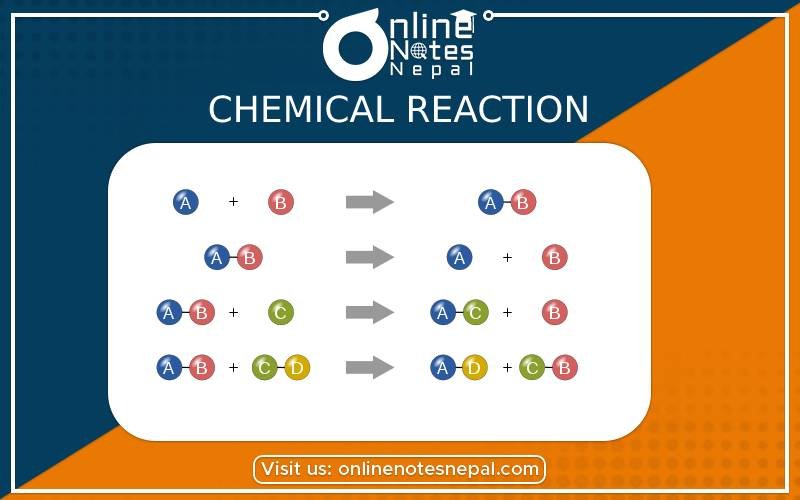Published by: Nuru
Published date: 16 Jan 2022

Chemical change is the change in which substance loses its properties and form new type of the substance which is different from the properties of the reactants.
Chemical change is brought about by addition, decomposition, exchange of atoms or molecules and the process by which chemical change occurs is called chemical reaction.
If the total number of atoms in the reactants and products are same then the chemical reaction is said to be balancedchemical equation.
For example:
4Al + 3O₂ → 2Al₂O₃
H₂ + O₂ → H₂O
Here, the number of oxygen in the reactant is not equal to the oxygen in product side. So, to balance the equation we have to balance the numbers on the reactant as well as product side.
Physical change is a temporary or reversible change in which no new substances are formed. Examples:
Characteristics of physical changes
A chemical change is a permanent and usually irreversible change in which new substances with different properties are formed.
Characteristics of chemical change
Differences between physical and chemical changes are as follows:
| Physical change | Chemical change |
| No new substances are formed. | New substances are formed. |
| It is a temporary change in which chemical composition of the substance remains the same. | It is a permanent change in which chemical composition of the substance changed. |
| Change in energy is not usually seen in it. | Change in energy is visible. |
| Change in mass is not seen. E.g., dissolving the salt in water | Change in mass is seen in it, e.g., rusting of iron. |
| Only the physical properties like colour, taste or state are changed. | Chemical, as well as physical properties, are changed. |
| It is usually reversible. | It is usually irreversible. |
Chemical reaction
The process by which a chemical change takes place is called as a chemical reaction. Those substances that take part in a chemical reaction are called reactants. Those substances which are formed by a chemical reaction are called products.
Word equation
The chemical reaction which is expressed in terms of full names of reactant and product molecules is called word equation. For example, Hydrogen reacts with oxygen to produce water.
Chemical Reaction Hydrogen + oxygen→Water
Hydrogen + oxygen→Water
(Reactants) (Products)
Chemical equations
The chemical reaction which is expressed by using themolecular formula of reactants and products is called chemical equation. The chemical equation is also called formula equation.
2H₂ + 2O₂ → 2H₂O
The chemical equation in which the total number of atoms of each element in reactant and product is not equal is called an unbalanced chemical equation or skeletal chemical equation. Some examples:
Drawbacks of skeletal chemical equation are listed below:
There are many unbalanced chemical equations which need to be balanced. Mostly, we balance the chemical equation by comparing the numbers of atoms in reactant and product molecules and then equalizing the both sides. Balanced chemical equation is a type of equation in which a total number of atoms in reactants and products are equal. It is based on the law of conservation of mass.
For example;
Hydrogen and oxygen react with eachother to produce water.
Hydrogen + Oxygen→ Water
H₂ + O₂ → H₂O (Skeletal equation)..........(i)
2H₂ + 2O₂ → 2H₂O (Balanced chemical equation).............(Ii)
In the above equation (ii), the total number of atoms in reactant and product are equal so it is a balanced chemical equation.
Balancing a Chemical Equation:
There are various ways to balancea chemical equation. But simplest one is Hit and trial method which is explained below:
Examples of balacned chemical equation are:
When ethane is burnt in oxygen, carbon dioxide gas and water are produced.
Ethane + Oxygen → Carbon dioxide + water(Word Equation)
C₂H₆ + O₂ → CO₂ + H₂ (Skeletal Equation)
2C₂H₆+ 7O₂ → 4CO₂ + 6 H₂O (Balanced Equation)
Irreversible reaction and reversible chemical reactions
The chemical reaction that occurs only in one direction is called irreversible reaction. For example, when calcium carbonate is being strongly heated, it decomposes to calcium oxide and carbon dioxide.
Calcium carbonate → Calcium oxide + Carbon dioxide
CaCO₃ → CaO + CO₂↑
The chemical reaction that occurs both in forward and backward directions is called reversible reaction.
Nitrogen + Hydrogen→ Ammonia
N₂ + H₂→ NH₃